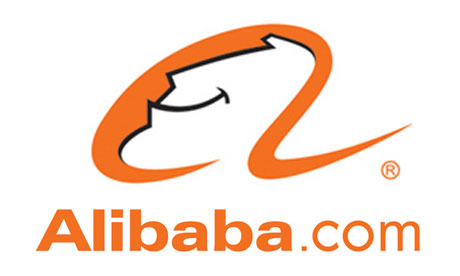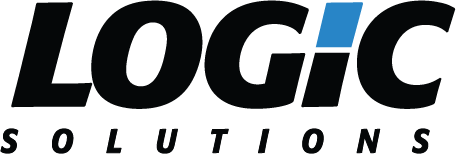Part One: Apple
I left for China the day after the keynote speech at the 2014 Apple Developer Conference. Admittedly, I have not really paid a lot of attention to Apple’s talks since Steve Jobs passed away. There is no better person to introduce a product than Steve Jobs. I used to be hooked to every talk he gave because they were just mesmerizing. He had a special ability to lead the audience through the birth of a new product. Some of Steve’s catch phrases such as “insanely great,” “it just works,” or “there is one more thing” have been a frequent reminder to me while doing product development.
I particularly loved his introduction of iPad. It went something like, “If there is a third category of product besides a smartphone and laptop, it must be good in doing something better than a smartphone or a laptop, such as browsing internet, reading emails, listening to music, watching movies, playing games, storing photos, reading an eBook.”
He went on to show a NetBook in between an iPhone and a MacBook. “Is it a NetBook? Is Netbook the third category?” He said (and again, I’m paraphrasing), “No. These NetBooks are not good at doing anything. They’re slow, they have low quality displays and they run clunky old PC software. They’re not better than a laptop at anything; they’re just cheaper. They’re just cheap laptops. We don’t think they’re a third category device, but we think we’ve got something that is, and we’d like to show it to you today for the first time. And we call it, the iPad.” With that, Steve Jobs killed the Netbook category.
Tablets existed long before iPad. I’ve owned a touch screen tablet PC from Toshiba, a Netbook PC from Asus, a Palm Pilot, and more. I bought those gadgets trying to convince myself that since they sounded that good, they couldn’t be that bad. However, these first movers are always bad. Apple, under Steve’s leadership, waited patiently until they were convinced that they had a category killer.
I was interviewed a few years ago by BBC the day after Steve Jobs passed away, after they picked up a blog that I wrote . The reporter asked me the same question that everyone else was asking, “Will Apple continue to come out with amazing products without Steve?” I said that I believed Apple will continue to have great products at least for the next few years because of the kind of culture Steve built at Apple.
I almost thought I might be wrong for a while since it has taken Apple many years to have a new category of products. So when I heard that Apple was going to talk about not one, not two, but three major products (iPhone 6, Apple Watch, and Apple Pay), I could not wait to watch the keynote. The presentation replaced many movies that I normally watch on a long flight. A fellow passenger, an anesthesiologist, looked over my shoulder when he saw the Apple Watch on my iPad and said, “Amazing, isn’t it?” It became part of Apple’s DNA: to have a product for which Steve Jobs would love to make the introduction.
Although most people’s attention was probably on iPhone 6, I was most interested in Apple Watch and Apple Pay. Apple Watch and Apple Pay are potential category killers.
Source: AppleRecently, my staff wrote an article about wearable devices. To me there is no question that wearable devices will be the next big thing. I have been wondering about devices like the Samsung Galaxy smart watches and Jawbone’s fitness bands. There has been good adoption of those products, but nothing has really wowed a generation.
To me there is nothing innovative about shrinking a smart phone’s user experience into a smart watch or putting a smart chip into a band where there is no display, thus requiring you to sync with your device to get information. Those devices do not “just work” and certainly are not “insanely great”.
Apple is not the first mover in the wearable category (or many categories), but they usually come out with a bang. I can’t wait for the Apple Watch to come out to put “insanely great” applications on them, just as they did with iPhone and iPad.
The other category that fascinates me is mobile payment, specifically Apple Pay. I believe it can empower small businesses the same way a PC empowered individuals. Online payment innovations have created a lot of successful companies, including Paypal, Square, and Ali Pay (China).
NFC (near field communication chip technology) technology used by Apple Pay has been around for a long time, but nobody including Google Wallet, Verifone or Ingenico (leaders in the credit processing devices) has made a dent in applying that technology. Apple Pay will build an ecosystem leveraging NFC, iPhone, iTunes and make it “just work”. Despite the new technologies, credit card transaction pains (both merchant and consumer) have persisted for the past twenty years. Now it seems Apple Pay have fast, secure, and effortless transactions that will empower small and large merchants, while providing a great user experience.
I’m proud to announce that Logic’s Showcase will soon include credit card processing capabilities. Our goal is to make personal selling experience easy and seamless so it “just works.”
 Part Two: Alibaba
Part Two: Alibaba
While Apple was becoming the most valuable company in the world, another, Alibaba, was rising in the east. Alibaba is positioning itself to become the most valuable IPO in history, and there is no question that Alibaba has had several category killers of its own.
Like Apple, Alibaba has not been the first mover in anything that they have done, not even close. By the time Jack Ma launched Alibaba’s eCommerce marketplace in 1998, B2B and B2C commerce were already quite mature in the U.S. Amazon and eBay were already well positioned to take on traditional brick and mortar. In fact, Amazon was the category killer that pretty much wiped out the bookstore industry, including my favorite store Borders.
Not only was Alibaba not the first mover in the world, it was not even the first mover in China. When Alibaba launched Taobao, a C2C (consumer to consumer) marketplace, eBay had already invested $150M in another Chinese commerce site called EachNet. EachNet initially gained about 85% of the Chinese market. Who would think Taobao would essentially take over the entire marketplace dominated by eBay, which has virtually no presence in China any more?
Alibaba did not stop there. Every few years, they would launch a product that would quickly dominate a market in China. After their C2C offering, they started T-Mall, providing eCommerce platforms similar to Amazon. Then there was AliPay, which individuals can use to pay to each other and merchants.
Alibaba pays enormous attention to user experience and user psychology for each and every product it releases. The common theme among users is “it just works.” Sound familiar?
Part Three: Two “A” Players
Although Apple and Alibaba excel in different markets, there are striking similarities between these two companies:
- No compromise on quality. Rather than being the first movers, they produce products that make a difference.
- Their priority on user experience is second to none. Steve Jobs once said that Apple “made the buttons on the screen look so good you’ll want to lick them.”
- They both carefully weave an infrastructure around which they create an ecosystem for their empires. Some people may be taken back by this kind of dominance. One analyst said that the Apple Watch is disappointing because it requires an iPhone. But isn’t Apple’s culture to control every aspect of its products? I would personally rather use a dominant but well designed product than use a dominant but inferior product (such as Microsoft DOS in its glory days).
- The companies were both led by individuals who possess an extreme passion in pursuit of their dreams. Jack Ma is as much a showman as Steve Jobs was.
Apple and Alibaba have built their empires on quality products that have no equal. For a moment, it seemed as though the companies were heading in different directions. Apple faltered following the death of Steve Jobs and Alibaba became one of the most talked about companies leading up to their IPO. For now, at least, they both look like they are back to where they have always been: at the top.
